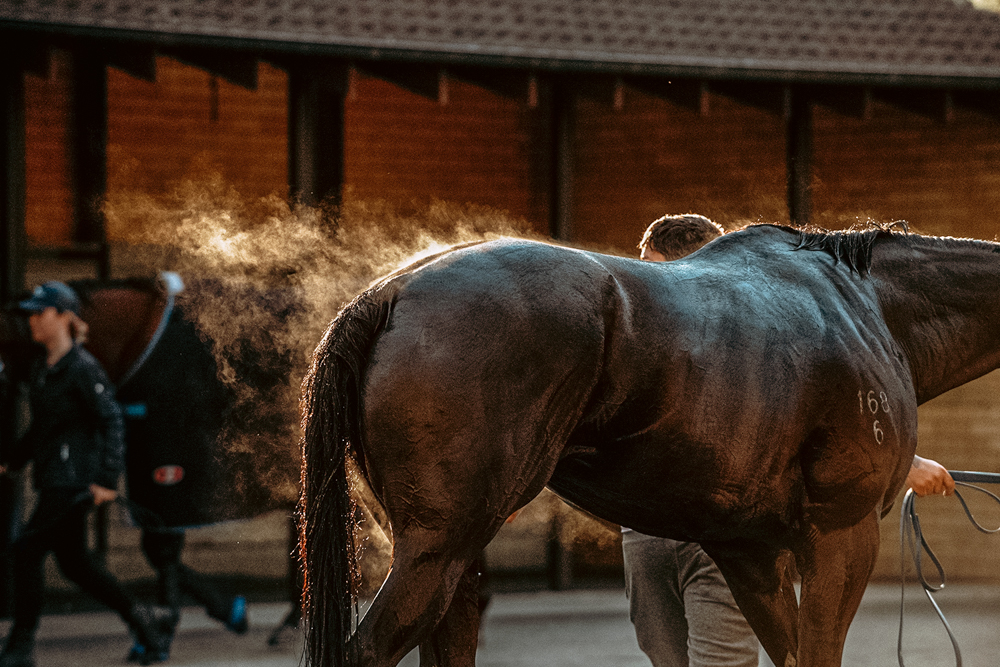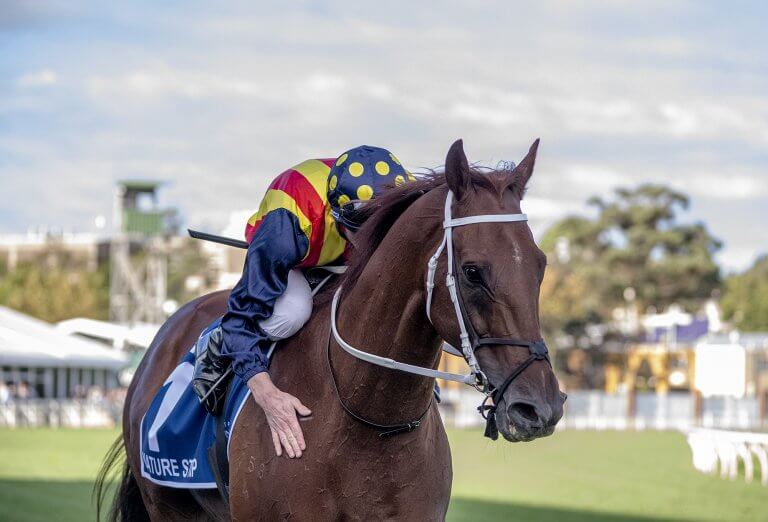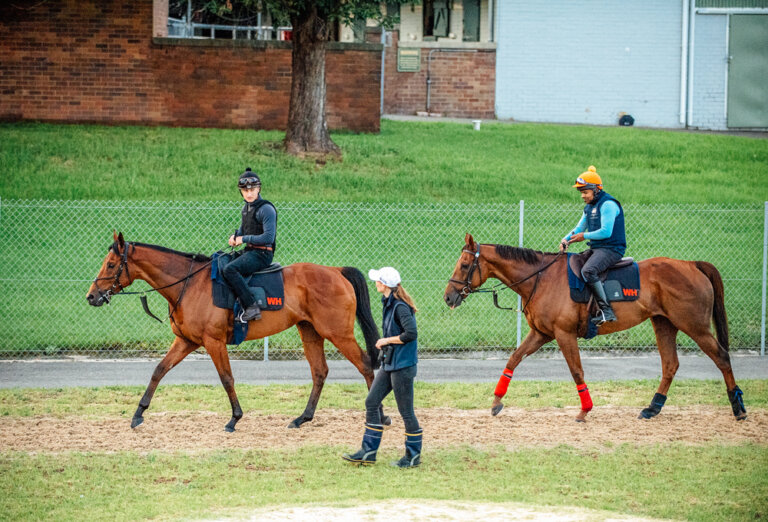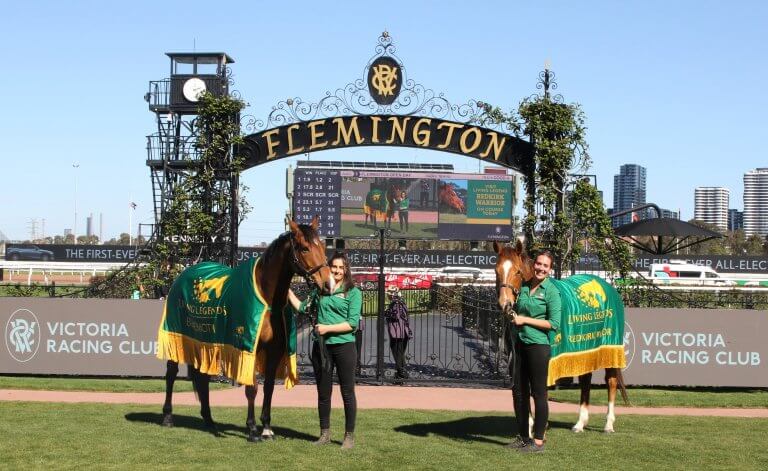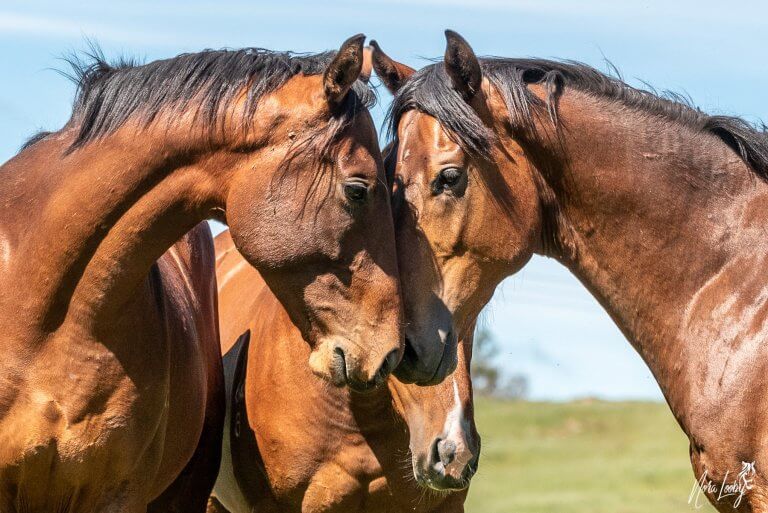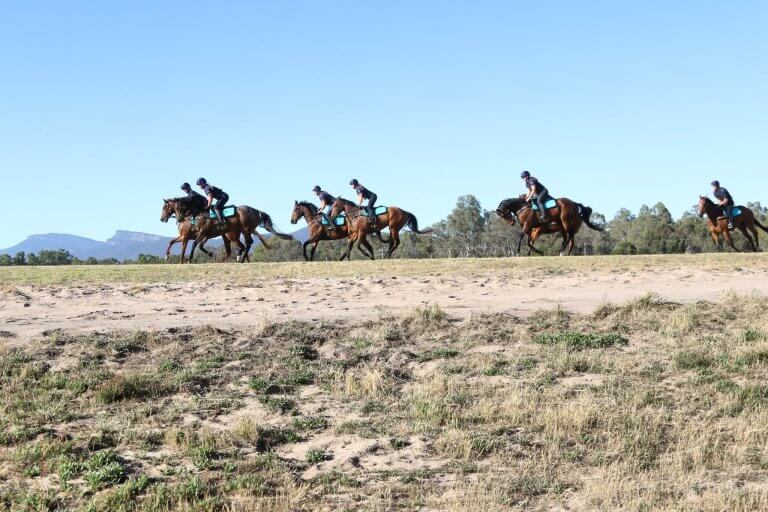Racing has a principle of ‘drug free’ racing. Under the rules of Australian racing, no horse is allowed to run in a race whilst under the influence of any medication, including anti-inflammatories, steroids, hormones and diuretics.
Horses are regularly tested, before and after races and in and out of training, ensuring racing is as clean as possible.
PART 1 – SUBSTANCES PROHIBITED AT ALL TIMES
Division 1 – Prohibited List A
The substances set out below in this Division 1 are specified as prohibited substances.
1. Erythropoiesis-stimulating agents, including but not limited to erythropoietin (EPO), epoetin alfa, epoetin beta, darbepoetin alfa, and methoxy polyethylene glycol-epoetin beta (Mircera).
2. Non-erythropoietic EPO-receptor agonists.
3. Hypoxia-inducible factor (HIF) stabilisers, including but not limited to cobalt and FG4592.
4. HIF activators, including but not limited to argon and xenon.
5. Allosteric effectors of haemoglobin, including but not limited to ITPP (myo-inositol trispyrophosphate).
6. Oxygen carriers including but not limited to perfluorochemicals, efaproxiral and modified haemoglobin products.
7. Haematopoietic growth factors, including but not limited to filgrastim.
8. Insulins.
9. Growth hormones and their releasing factors.
10. Insulin-like growth factor-1.
11. Synthetic proteins and peptides and synthetic analogues of endogenous proteins and peptides not registered for medical or veterinary use in Australia.
12. Corticotrophins, including adrenocorticotrophic hormone (ACTH) and tetracosactrin (tetracosactide), and corticotrophin releasing factors.
13. Anabolic androgenic steroids (other than an anabolic androgenic steroid which is present at or below the relevant thresholds set out in Schedule 1, Part 1, Division 3)
14. Selective androgen receptor modulators (SARMS).
15. Selective estrogen receptor modulators (SERMS).
16. Selective opioid receptor modulators (SORMS).
17. Peroxisome proliferator activated receptor δ (PPARδ) agonists, including but not limited to GW 1516.
18. AMPK activators, including but not limited to AICAR (5-amino-1-β-D-ribofuranosylimidazole-4-carboxamide).
19. Other agents that directly or indirectly affect or manipulate gene expression.
20. Agents modifying myostatin function, including but not limited to myostatin inhibitors.
21. Thymosin beta.
22. Venoms of any species or derivatives of them.
23. Zoledronic acid and any other bisphosphonate drugs not registered for veterinary use in Australia.
24. Substances listed in Schedule 8 and Schedule 9 of the Standard for the Uniform Scheduling of Medicines and Poisons contained in the Australian Poisons Standard.
25. Metabolites, artefacts and isomers of any of the substances identified in this list.
Note: The above list needs to be read with the exemptions and thresholds set out below in Part 1,
Divisions 2 and 3.
Division 2
The substances are specified as prohibited substances for the purposes of AR 240, AR 241, AR 244, AR 245, AR 246 and AR 251.
1. Bufotenine.
2. Butorphanol.
3. 3-(2-dimethylaminoethyl)-4-hydroxyindole.
4. N,N-dimethyltryptamine.
5. Ketamine.
6. Methadone.
7. Morphine.
8. Pethidine.
9. Quinalbarbitone.
Division 3 – Prohibited List A thresholds (anabolic androgenic steroids)
The prohibited substances set out below in this Division 3 when present at or below their respective threshold are exempt from Prohibited List A.
1. In male horses other than geldings, free and glucuroconjugated 5α-estrane-3β, 17α-diol at a mass concentration of 45 micrograms per litre in urine when, at the screening stage, the free and glucuroconjugated 5α-estrane-3β, 17α-diol exceeds the free and glucuroconjugated 5,10 estrene-3β,17α-diol in the urine. [subrule amended 1.6.19]
2. Testosterone:
(a) in geldings: free testosterone and testosterone liberated from its conjugates at a mass concentration of 20 micrograms per litre in urine;
(b) in fillies and mares: free testosterone and testosterone liberated from its conjugates at a mass concentration of 55 micrograms per litre in urine;
(c) in geldings, fillies and mares: free testosterone at a mass concentration of 100 picograms per millilitre in plasma; [subrule amended 1.6.19]
(d) in fillies and mares that have been notified as pregnant under AR 84(2): free testosterone and testosterone liberated from its conjugates at any concentration in urine, or free testosterone at any concentration in plasma. [subrule amended 1.6.19]
3. Boldenone in male horses other than geldings (including both free boldenone and boldenone liberated from its conjugates) at a mass concentration of 15 micrograms per litre in urine.
PART 2 – SUBSTANCES PROHIBITED ON RACE DAYS, CERTAIN TRIALS ETC
Division 1 – Prohibited List B
The substances set out below in this Division 1 are specified as prohibited substances.
1. Substances capable at any time of causing either directly or indirectly an action and/or effect within one or more of the following mammalian body systems:
(a) the nervous system;
(b) the cardiovascular system;
(c) the respiratory system;
(d) the digestive system;
(e) the musculo-skeletal system;
(f) the endocrine system;
(g) the urinary system;
(h) the reproductive system;
(i) the blood system; and
(j) the immune system.
2. Substances within, but not limited to, the following categories:
(a) acidifying agents;
(b) adrenergic blocking agents;
(c) adrenergic stimulants;
(d) agents affecting calcium and bone metabolism;
(e) agents that directly or indirectly affect or manipulate gene expression;
(f) alcohols;
(g) alkalinising agents;
(h) anabolic agents;
(i) anaesthetic agents;
(j) analgesics;
(k) antiangina agents;
(l) antianxiety agents;
(m) antiarrhythmic agents;
(n) anticholinergic agents;
(o) anticoagulants;
(p) anticonvulsants;
(q) antidepressants;
(r) antiemetics;
(s) antifibrinolytic agents;
(t) antihistamines;
(u) antihypertensive agents;
(v) anti-inflammatory agents;
(w) antinauseants;
(x) antineoplastic agents;
(y) antipsychotic agents;
(z) antipyretics;
(aa) antirheumatoid agents;
(bb) antispasmodic agents;
(cc) antithrombotic agents;
(dd) antitussive agents;
(ee) blood coagulants;
(ff) bronchodilators;
(gg) bronchospasm relaxants;
(hh) buffering agents;
(ii) central nervous system stimulants;
(jj) cholinergic agents;
(kk) corticosteroids;
(ll) depressants;
(mm) diuretics;
(nn) erectile dysfunction agents;
(oo) fibrinolytic agents;
(pp) haematopoietic agents;
(qq) haemostatic agents;
(rr) hormones (including trophic hormones) and their synthetic counterparts;
(ss) hypnotics;
(tt) hypoglycaemic agents;
(uu) hypolipidaemic agents;
(vv) immunomodifier;
(ww) masking agents;
(xx) muscle relaxants;
(yy) narcotic analgesics;
(zz) neuromuscular agents;
(aaa) oxygen carriers;
(bbb) plasma volume expanders;
(ccc) respiratory stimulants;
(ddd) sedatives;
(eee) stimulants;
(fff) sympathomimetic amines;
(ggg) tranquillisers;
(hhh) vasodilators;125
(iii) vasopressor agents; and
(jjj) vitamins administered by injection.
3. Metabolites, artefacts and isomers of the substances set out in paragraphs 1 and 2 of this Division 1.
Note: The above list needs to be read with the exemptions and thresholds set out below in Part 2,Divisions 2 and 3.
Division 2 – Prohibited List B exemptions
The substances set out below in this Division 2 are exempt from Prohibited List B.
1. Antimicrobials (antibiotics) and other antiinfective agents but not including procaine
penicillin.
2. Antiparasitics approved and registered for use in horses.
3. Ranitidine.
4. Omeprazole.
5. Ambroxol.
6. Bromhexine.
7. Dembrexine.
8. Registered vaccines against infectious agents.
9. Orally administered glucosamine.
10. Orally administered chondroitin sulphate.
11. Altrenogest when administered to fillies and mares.
Division 3 – Prohibited List B thresholds
The prohibited substances set out below in this Division 3 when present at or below their respective threshold are exempt from Prohibited List B.
1. Alkalinising agents, when evidenced by total carbon dioxide (TCO2) at a concentration of 36.0 millimoles per litre in plasma.
2. Arsenic at a mass concentration of 0.30 milligrams per litre in urine.
3. Dimethyl sulphoxide at a mass concentration of 15 milligrams per litre in urine or 1.0 milligrams per litre in plasma.
4. In male horses other than geldings, free and glucuroconjugated 5α-estrane-3β, 17α-diol at a mass concentration of 45 micrograms per litre in urine when, at the screening stage, the free and glucuroconjugated 5α-estrane-3β, 17α-diol exceeds the free and glucuroconjugated 5,10 estrene-3β,17α-diol in the urine. [subrule amended 1.6.19]
5. Salicylic acid at a mass concentration of 750 milligrams per litre in urine or 6.5 milligrams per litre in plasma.
6. Hydrocortisone at a mass concentration of 1.00 milligrams per litre in urine;
7. Testosterone:
(a) in geldings: free testosterone and testosterone liberated from its conjugates at a mass concentration of 20 micrograms per litre in urine;
(b) in fillies and mares: free testosterone and testosterone liberated from its conjugates at a mass concentration of 55 micrograms per litre in urine;
(c) in geldings, fillies and mares: free testosterone at a mass concentration of 100 picograms per millilitre in plasma; [subrule amended 1.6.19]
(d) in fillies and mares that have been notified as pregnant under AR 84(2): free testosterone and testosterone liberated from its conjugates at any concentration in urine, or free testosterone at any concentration in plasma. [subrule amended 1.6.19]
8. 3-Methoxytyramine (including both free 3-methoxytyramine and 3-methoxytyramine liberated from its conjugates) at a mass concentration of 4.0 milligrams per litre in urine.
9. Boldenone in male horses other than geldings (including both free boldenone and boldenone liberated from its conjugates) at a mass concentration of 15 micrograms per litre in urine.
10. Not used. [subrule deleted 1.2.21]
11. Cobalt at a mass concentration of 100 micrograms per litre in urine or 25 micrograms per litre in plasma.
12. Prednisolone (free prednisolone) at a mass concentration of 10 micrograms per litre in urine
So, there's no drugs in racing?
Not quite…
Drugs, medications and treatments are used in the training of horses, much like human athletes.
Mild, non-steroidal anti inflammatories such as aspirin, or the more horse-specific pain relief medication phenylbutazone (known as ‘bute’), are commonly used to aid in the recovery of sickness, pain and inflammation, just as humans turn to paracetamol and ibuprofen.
Corticosteroids are sometimes used for the relief of joint pain in racehorses. These aren’t the same as anabolic steroids (the kind used by some bodybuilders), which are strictly prohibited.
Rigorous testing processes
Horses are tested routinely at the races and in and out of training.
Registered vets, working on behalf of the stewards, take blood samples, looking for the presence of medications in their system. If a horse has received a medication in training, there may still be traces of that medication in their system – as with humans, medications will work their way out of the body over slightly different time frames.
All of the permitted medications come with advised ‘withdrawal periods’ – the recommended number of days before a race that a horse should not be given that medication, so that it’s not affecting the horse on race day. However, even when those withdrawal periods are correctly followed there may still be traces of previously administered, so, just like with human athletes, there are ‘screening limits’ for substances detected.
Keeping record
Trainers are required to keep a record of any medication or treatment administered to any horse in their care on a daily record. Stewards can inspect these records at any time, and fines and penalties are given out if trainers aren’t following the steps they should be.
Anabolic steroids are strictly prohibited in and out of training, and any registered horse may be tested by stewards at any time – horses can even be tested as foals and at horse sales.
The bad dudes
Racing is constantly working to keep the sport clean, just like athletics, cycling – indeed all sports. Unfortunately, there will always be a tiny minority who will try to break the rules, but racing pours enormous amounts of money and resources into testing.
Just one state, NSW, conducted a total of 113,507 tests in the 2020/21 season alone.
So, the cheats are rare, but when they do come along they are severely penalised and often ostracised by other industry participants.
In a landmark 2018 case, trainer Robert Smerdon was banned for life, bringing his career to an end, and fined $100,000 for systematic cheating.
Non-equine athletes
It’s not just horses that are tested – jockeys, trackwork riders and stablehands are all licensed and therefore liable to be regularly tested for both drugs and alcohols by stewards. They will receive fines and bans too if they are found to have any prohibited or undeclared substances in their system.
